For generations of children with special needs in Vietnam, school has been something only other children get to do. But now, in one rural community, over one hundred sponsored children are shattering stereotypes, exceeding expectations — and loving every minute of it.
Khang swivels his head and shakes his body to the pop-y, upbeat dance tempo that reverberates off the tile floor and blares out into otherwise quiet fields of rice on this cool January day. He opens his mouth wide and snaps it shut in a toothy grin, reaching out for a friend who dances alongside him.
Some of Khang’s movements are involuntary — a result of the impaired motor control characteristic of individuals with cerebral palsy. His arms are constantly outstretched, his fingers bent and rigid. He can’t stand without assistance, and as he dances, a teaching assistant sits in a chair behind him, holding him up by the waist. But at this moment, lost in the euphoria of dancing with his friends on a Friday afternoon, Khang seems completely and blissfully oblivious to his limitations.
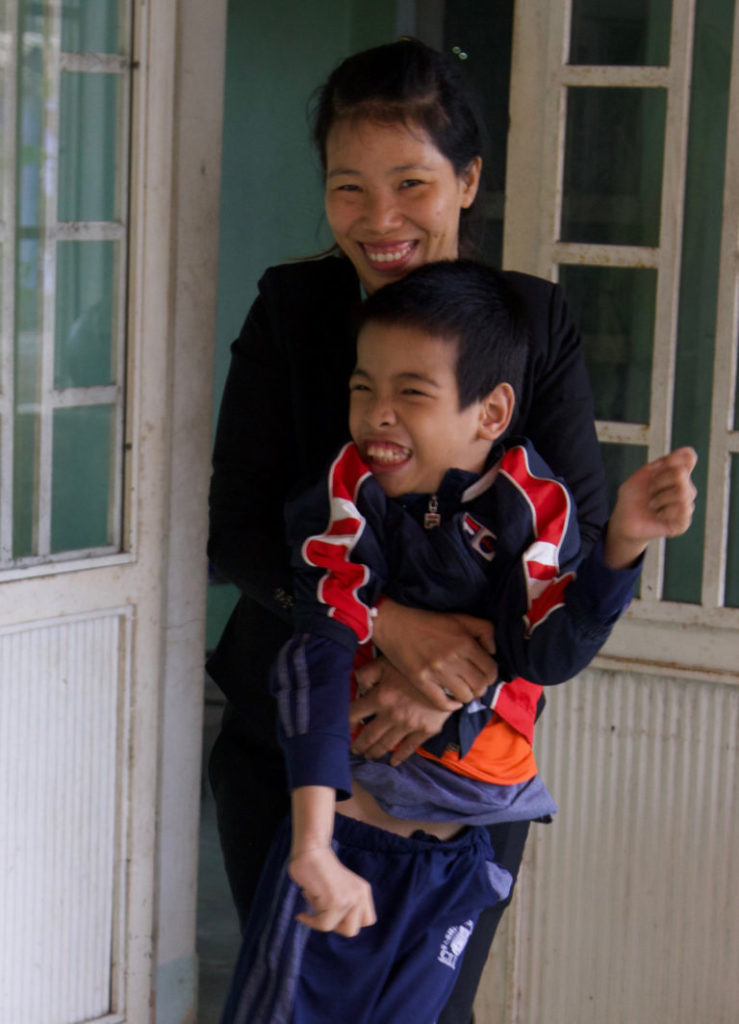
Until just a few years ago, Khang’s physical limitations practically consumed him — overtaking parts of his life that should not, and do not, have anything to do with having cerebral palsy. With no school nearby that offered special education — and no other option — Khang’s mom began taking him to a daycare center while she worked during the day.
Although the daycare supposedly offered rehabilitation for children with special needs, Khang says he just sat, all day, every day, treated like an inanimate object. As he struggled with speech, and had never received speech therapy, he sat silently — afraid to talk. But like any other 7-year-old boy, Khang craved connection and interaction. He cried every day that he had to go back to the care center.
“I felt so sad and bored,” says Khang, his voice now loud and firm. “There was nobody to play with me.” No one recognized that locked inside Khang’s body was a bright and funny little boy with a mind still malleable and eager to learn.
“I felt so sad and bored. There was nobody to play with me.”
Khang
Khang’s mom is in her 20s, wears her hair back in a ponytail and has the same lovely smile as her youngest son. She works as a food and beverage manager at a resort near her home in Hoi An — an historic port village and World Heritage Site that draws thousands of international tourists every year. She speaks English well, and when we meet her, she walks confidently over to greet us.
“I didn’t have much hope for him in the past,” she says, holding her son’s hand, their fingers neatly interwoven. “My only hope for him was that he would be able to take care of his personal hygiene.”
To pay for daycare, Khang’s mom tells us it cost her $150 per month — $50 more than she pays every month in rent. On limited income, she and her husband could barely afford food and other basic needs for themselves and their two boys. “We were in an extremely difficult time,” she says.
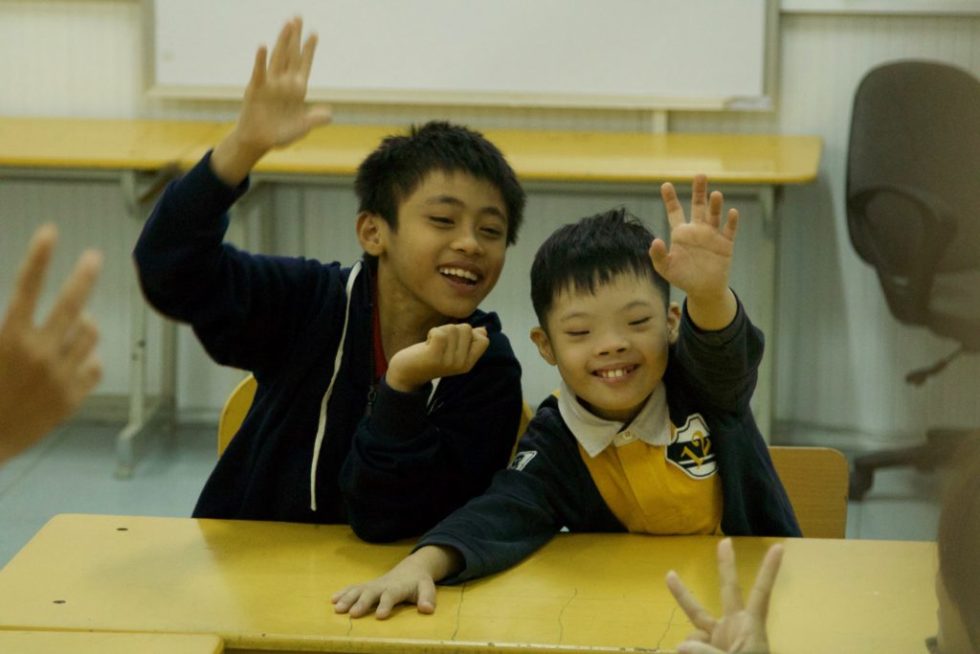
But then she heard about a special school that had recently opened near her home in Hoi An — a school that offered a curriculum designed specifically for children with special needs. Children who had never gone to school before. Children kept hidden away in their homes or, out of poverty and desperation, sent for care in an orphanage. Children with active minds and uncooperative bodies who had given up hope of ever escaping the corner where they sat, or the bed where they lay, lonely and bored and misunderstood.
A Special School for Kids With Special Needs
Khang’s mom quickly enrolled her son at the school, called Kianh Foundation Center. She then learned that because of a handful of generous sponsors, she would only have to pay a very small fee for Khang to attend. It sounded too good to be true.
For the first time, outside of his family, her son would be seen as a person – deserving of love and attention, of education and opportunity, and capable of becoming a contributing and valued member of his community.
As she would come to find out, however, Khang’s special needs did not set him apart from his community. In fact, in their small town of 120,000 people, thousands of other kids and adults shared Khang’s story and experience. It’s a story inextricably tied to one of the darkest chapters in Vietnam’s history.
“In this small catchment area, we have every kind of disability that you can imagine,” explains Jackie Wrafter, the founder and director of Kianh Foundation.
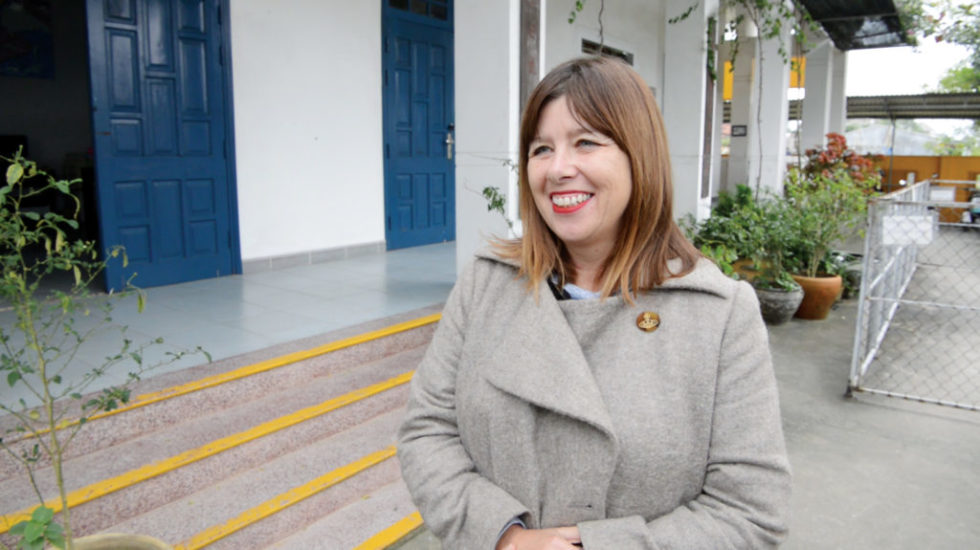
Located in the impoverished, semi-rural area of Dien Ban, between the coastal city of Danang and where Khang and his family live in Hoi An, the Kianh Foundation Center is enveloped by tropical foliage — regrowth over generations of the same lush foliage that the U.S. military doused with the chemical defoliant Agent Orange during the Vietnam War. The dioxins used in Agent Orange are tied to at least a dozen health conditions, including birth defects.
Although the government does not comprehensively track rates of disability, their most recent census — conducted in 2009 – estimated about 8 percent of the population to have difficulty with vision, hearing, movement or cognition. Actual rates, however, are likely much higher.
“A lot of children [at Kianh Foundation] aren’t on any government lists whatsoever,” says Jackie. “Also, diagnosis is not as good as it could be.”
What is well documented, however, are comparative rates from province to province. The ten provinces most heavily sprayed with Agent Orange during the Vietnam War are the same provinces with the highest rates of disability. Among these ten provinces is Quang Nam — where Dien Ban, and Kianh Foundation, are located.
The ten provinces most heavily sprayed with Agent Orange during the Vietnam War are the same provinces with the highest rates of disability. Among these ten provinces is Quang Nam — where the Kianh Foundation is located.
This distinction — this living legacy of the Vietnam War — is something that can be both seen and felt in the community of Hoi An. “It just really feels,” Jackie says, “like there are more [special needs] than at home.”
An expat from Britain, Jackie has vibrant red hair and speaks in the distinctive Liverpool accent made famous by The Beatles. Eighteen years ago, Jackie took a year off from her job in publishing to travel, and search for something different to do with her life. She just wasn’t sure what. Not until she stepped inside one very dark, hot and smelly room in an orphanage in Hoi An, Vietnam.
They had about 70 kids at the orphanage,” says Jackie, who visited the orphanage at the urging of a friend. “But at the time, they had 16 children with disabilities who they just kept locked in the room — just basically being kept alive.”
When she opened the door, the children moved and stared up at the light — mesmerized. Many of them lay in fetal positions. Some banged their heads against their beds.
“They were all very physically disabled, and they seemed really cognitively disabled as well,” Jackie says.
But as Jackie and her friend spent more time with the children, they began to see a light of recognition in many of their eyes.
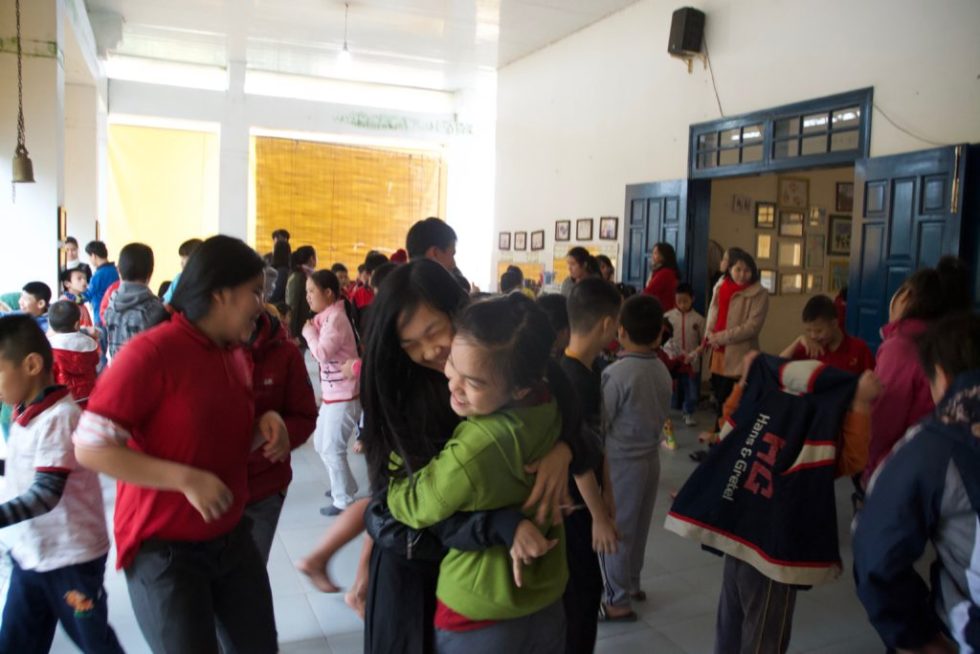
“We found out lots of them had really quite minimal learning disabilities, but they just kind of closed down because nothing ever happened in their lives,” Jackie says. “The more time we spent with them over a month period, the more and more they began to open up. And it was really quite exciting to see.”
Jackie admits that neither she nor her friend had any training in how to work with children with special needs. “We really didn’t know what we were doing,” she says. But by talking to them and engaging with them, they could see very clearly that these children had active minds, eager to interact with the outside world.
Regardless of their abilities, they were, each of them, a person — equally deserving of love and attention.
“That,” Jackie says, “is when we decided to do more.”
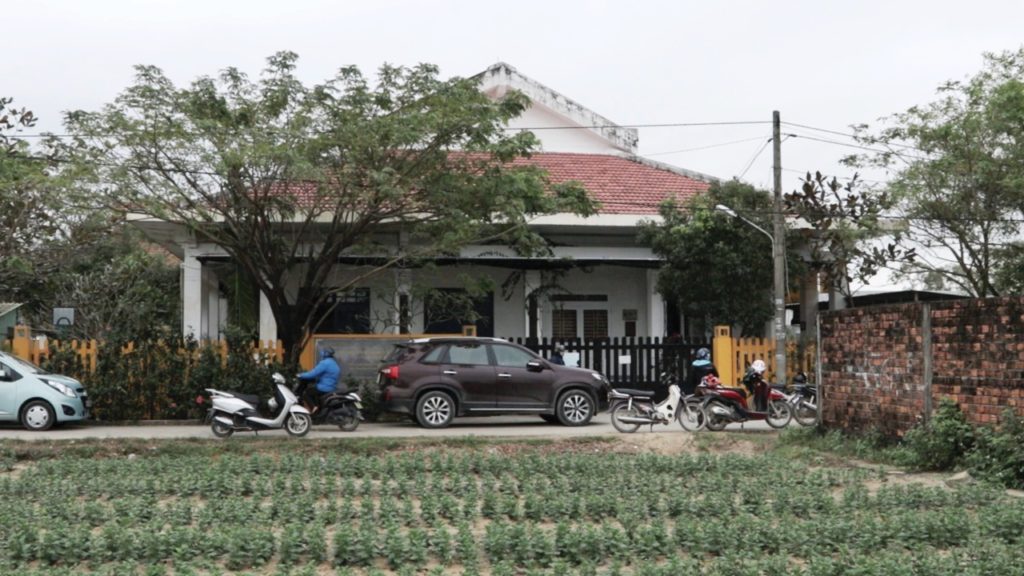
A Day at the Kianh Foundation Center
At mid-morning on Friday, we walk along the tiled, open-air corridors that frame the Kianh Foundation Center — discreetly peeking into classrooms so as not to distract the students. In one room, children are creating beautiful pictures. Star charts and artwork and posters with the English words for colors and numbers cover the walls. It’s a chilly day and many of the children wear knit caps and jackets over their red Kianh Foundation polos. Some of them paint with watercolors and some of them draw in crayon or pencil — using the tool most suitable for their particular special need. They draw vibrantly colored houses and trees, giant butterflies and surrealist landscapes.
Three aides and one teacher move about the room — encouraging and assisting the students. The teacher shares that she is formally trained as an art instructor, and she studied with a specialist to learn how to work with the kids at Kianh Foundation.
Khang is in art class this morning, and he sits beside his friend, who also has cerebral palsy. Between them, nailed to the desk, is a wooden handle that they take turns holding as they draw. Because their hands often move spastically, the handle helps them keep one hand still so they can draw better with the other hand.
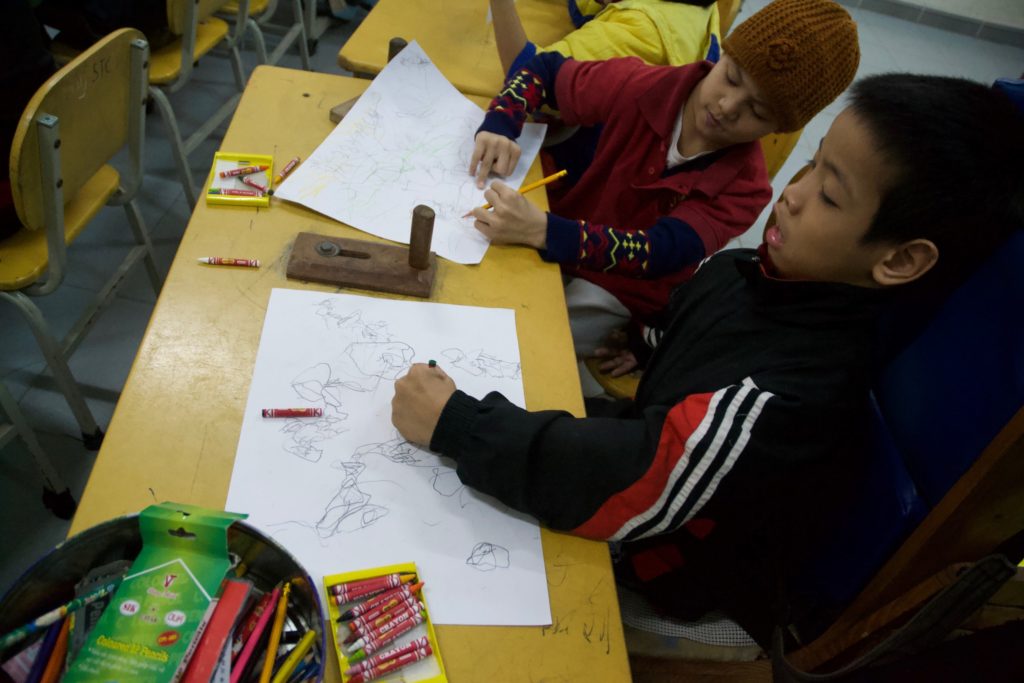
Toward the end of class, our staff from Holt Vietnam hand out Christmas cards that sponsors signed for their sponsored children — many of them with pictures of their sponsors’ families and pets glued inside. One teenage girl walks over to us, pointing to the illustrations on the card. “Dog,” she says in English, pointing to a picture of a dog. She tells us in English that she has one dog and three cats at home. She shows us her painting — a watercolor with a bright orange tree and a red-and-black butterfly. She teaches us the Vietnamese word for butterfly and then, in English, she tells us she is 15. Her name is Ny, and she dreams of becoming a baker.
Ny grew up in a mountain province, but when her parents divorced, she moved to Danang with her mom. For a brief time, she attended a special center where she learned to read and write. But when her mom moved again for work, Ny had nowhere to go. For four years she sat at home, playing with her pets. She never attended a real school before Kianh Foundation, she says. She started school just six months ago.

Ny has such a mild degree of cerebral palsy, it’s surprising that she would struggle to succeed at a traditional public school. But without sufficient resources, understanding and opportunities, attendance and graduation rates for people with all degrees of special needs remain extremely low in Vietnam. “When I first came here in 2000, there was maybe one special school, one or two, in Danang — the next city — but the children who go there are pretty high functioning,” Jackie explains. “In the area where we are now, though, there were no special schools whatsoever.”
Ideally, special education would be integrated into the public school system — to show the community that with support, children with special needs can learn and function just as well as children who don’t have any physical or developmental limitations. But as Thoa Bui, Holt’s vice president of South and Southeast Asia programs, explains, the government school system in Vietnam simply does not have the resources to meet the needs of these children.
“A lot of the kids admitted to Kianh Foundation were expelled from the government school system because the teachers didn’t know what to do with them.”
Thoa Bui, Holt’s vice president of South and Southeast Asia programs
“The schools and teachers are not equipped and trained to provide the support for children with special needs in the classroom,” says Thoa, who grew up in Danang. With classrooms averaging about 50 students each, teachers already struggle to deliver lessons in a way that meets the diverse learning styles of the children in the room.
“So if you have one child with a disability in the classroom — especially a child with cognitive or behavioral issues — then it’s hard because they act out sometimes out of frustration,” Thoa says. Without any training to help children with special needs learn at their own pace, and express their feelings in a constructive way, teachers often give up. Some ask parents to stop sending their children to school. In other cases, children are actually expelled because of behavioral issues.
“A lot of kids admitted to Kianh Foundation were expelled from the government school system because the teachers didn’t know what to do with them,” Thoa says.
But when word got out in the community that Jackie and her friend had begun working with children with special needs — even at a very basic level — families began bringing their children with special needs to the orphanage. In 2012, when they opened Kianh Foundation Center, enrollment surged.
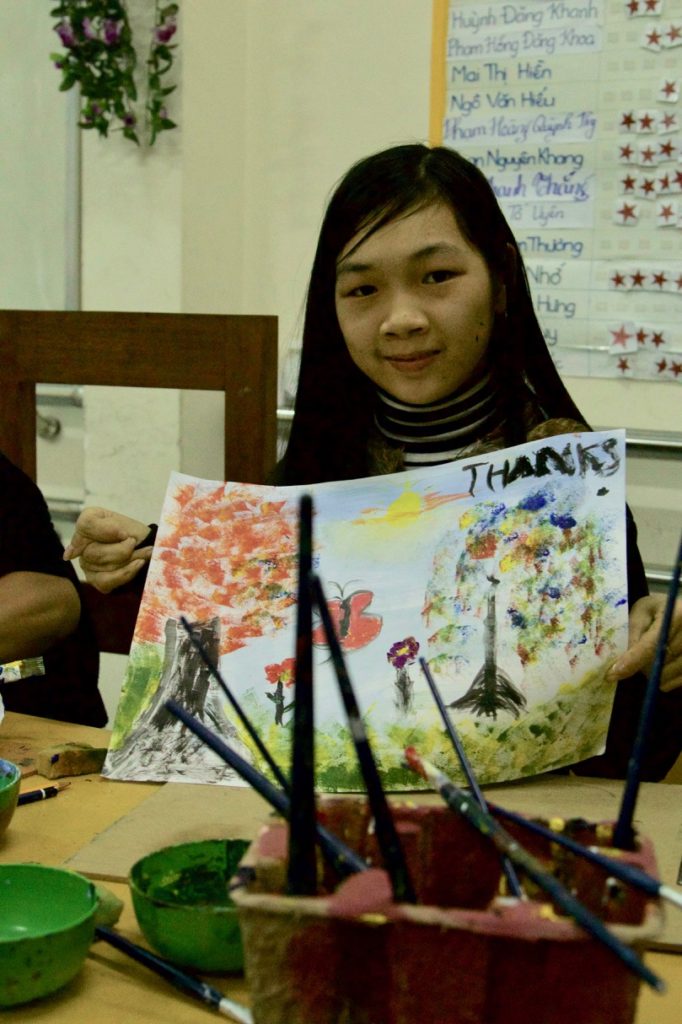
“They just wanted — they wanted help of course — but I think they really were exhausted and they needed respite,” Jackie says.
As many of the families already lived in poverty, the need to stay at home and provide full-time care to their child drove them into deeper poverty. “About 90 percent of the families we work with are even poorer because they can’t get out to work,” Jackie says.
Recognizing the families’ limited financial means, Jackie and her staff decided to charge Kianh Foundation tuition on a sliding scale, depending on the families’ ability to pay. Khang’s family, for example, has more resources than some of the other families and pays slightly more for their son to attend this extraordinary school. But with the majority of families only able to pay the smallest possible fee, Kianh Foundation needed donations — ideally monthly donations. That’s where sponsors come in. “It’s the best donation that we can get,” Jackie says of the funds that sponsors provide every month. “It’s what we really, really need.”
By providing funding for supplies, books and uniforms, to pay for teacher salaries and general operating costs, sponsors give the children access to an education that they would never otherwise have. But as Thoa shares, the impact sponsors have in the lives of these children goes even beyond education.
“The biggest thing is they help these children remain in their birth families,” she says. “Because I really don’t know what happens with them once their birth families are exhausted, without resources.”
In Vietnam, rates of relinquishment and abandonment are considerably higher for children with special needs, and many of them are older when they come into orphanage care.
Without support and resources, parents just don’t know what to do for their kids. “They believe,” Thoa says, “that orphanages can provide better care.”
“In many developing countries, the common belief is if you are born with a disability, then you are disabled. There’s no way you can function or do more. Kianh Foundation does not believe that.”
Thoa
Eighteen years ago, when Jackie stepped inside that dark and smelly room in the Hoi An orphanage, she saw otherwise. By opening Kianh Foundation, she hoped to provide an alternative for parents considering placing their child in an orphanage.
But that was just the starting point.
“In many developing countries, the common belief is if you are born with a disability, then you are disabled. There’s no way you can function or do more,” Thoa says. “Kianh Foundation does not believe that.”
At Kianh, teachers push children to achieve their full potential. But without examples in the community of people with special needs living and working alongside them, at first, many parents had low expectations of what the school could do for their children — or what their children could achieve.

“Once they saw what we were able to do with the children,” Jackie says of the students’ parents, “they were really pleased and grateful and excited.”
With her greatest hope that her son would be able to take care of his personal hygiene and learn to feed himself, Khang’s mom never expected to see him sit up in a chair or play games on an iPad or speak with confidence, sometimes in English. She didn’t expect that he would learn how to do math or write text messages to his friends or figure out how to secretly order toys online — which got him into trouble, but also demonstrated the depth of his abilities, and his potential for one day holding a job.
Khang’s grandma also takes care of Khang. Before, he would pull his grandma’s hair and say mean things to her when he got angry or frustrated. “It was heartbreaking,” she says. But now, he doesn’t feel that kind of anger. He’s nice to his grandma, who looks lovingly at her grandson as she speaks.
“It’s all because of Kianh,” she says.
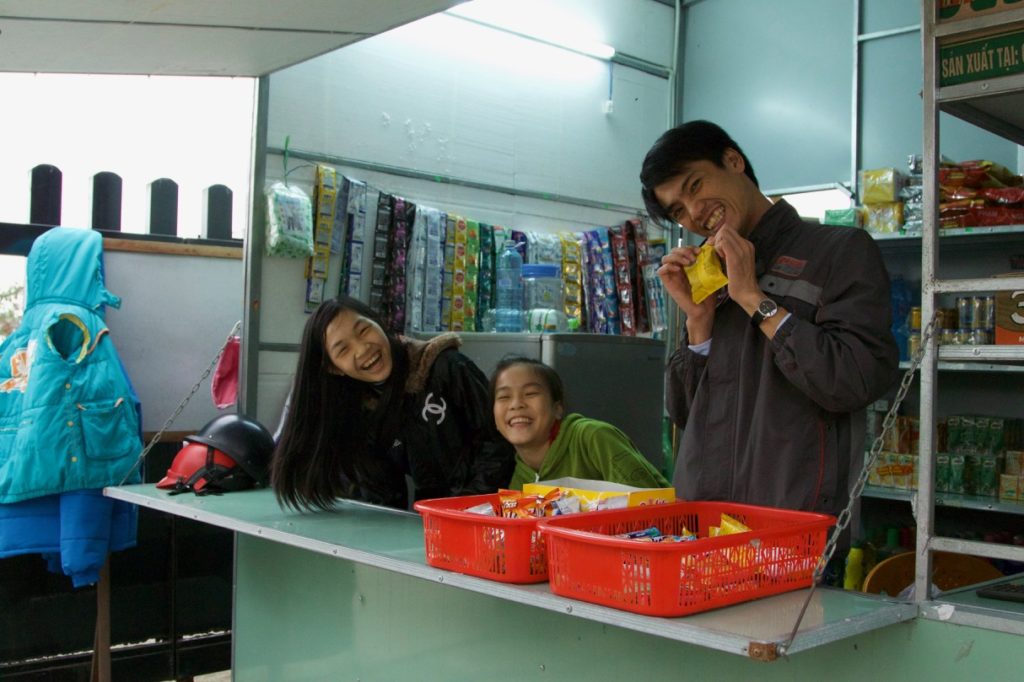
Included in Community
At the end of the school day, as their Friday afternoon dance party winds down and the kids get ready to leave for the weekend, their parents start pulling up in front of the school. Many of them park their motorbikes and enter the schoolyard to sit down in plastic patio chairs and chat while waiting for their kids. By the patio chairs, the older children run a small shop — building skills they can later use to find a job. This afternoon, Ny is working in the shop, and she greets the parents as they line up to buy bags of chips or coconut candy. Many of the parents have coffee together while their children play. Some of them, Jackie says, go out to sing karaoke together.
“The families have usually been very isolated as well,” she says. “But now, they’re friends.”
While the families of Kianh students have built a thriving community in Hoi An, many families of children with special needs and — most importantly – children with special needs remain excluded from the opportunities and sense of belonging that Kianh Foundation provides. “We’ve got 130 children at this center, but it’s nowhere near enough,” Jackie says. “We’re just really working with the tip of the iceberg.”
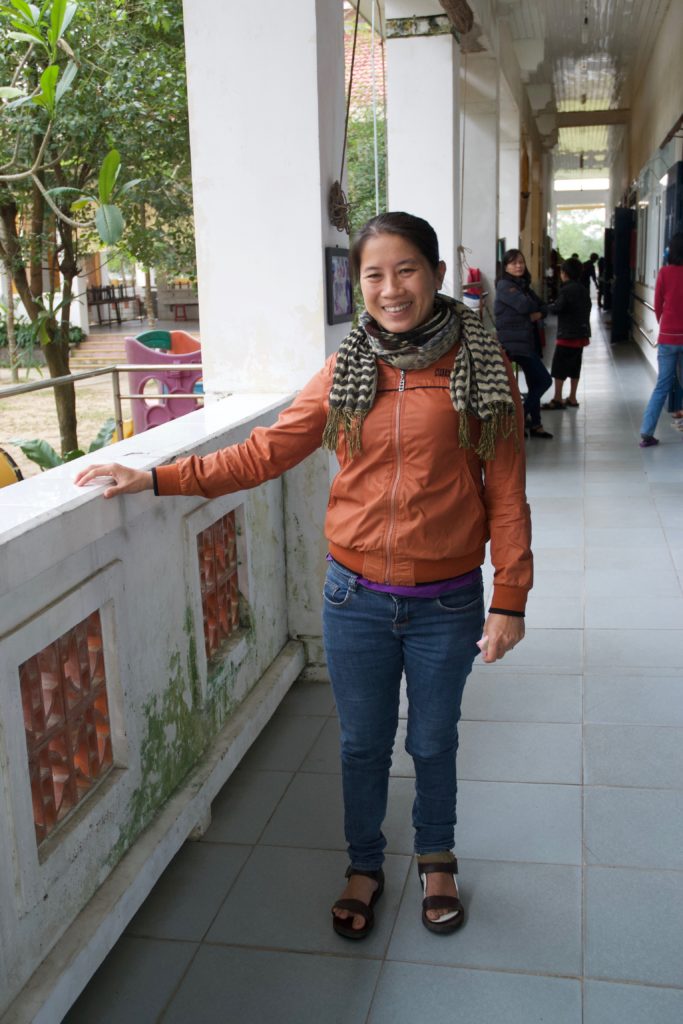
Kianh has 140 children on the waitlist — a list that grows monthly — but classrooms are full. To keep student-to-teacher ratios low, the school needs more teachers. Thankfully, however, the local people’s committee has already donated a thousand square meters of land. With additional donations, the school will have space to expand — making it possible for more and more students to enroll.
“That’s our current aim, and our dream,” Jackie says.
Every year, the children at the Kianh Foundation Center have a one-month summer break. During the break, Khang gets bored pretty quickly.
“He will always say, ‘This is really long,’” his grandma says, “‘I miss my friends and teachers. When does school start?’” Sometimes, he’ll send text messages to his friends. “It’s been too long!” he’ll write. “See you in two weeks!” Khang tells us he has many friends at school, and also a girlfriend — but he’s not going to tell us who!
As we talk with Khang, his grandma holds his left hand. His mom sits on the other side of Khang, holding his other hand. The social worker from the school stands nearby. Like Khang, the social worker also has mobility issues and uses canes to walk. She knows this family well, and on the car ride over, she playfully bantered with Khang about her propensity for carsickness.
On all sides, and in all places, Khang is surrounded by people who love him. At school, at home, and in his newfound community of friends and classmates, teachers and parents — with and without special needs — Khang is seen for the person he is, not the things he can or cannot do.
But Khang’s family knows that another person is also watching out for Khang from afar.
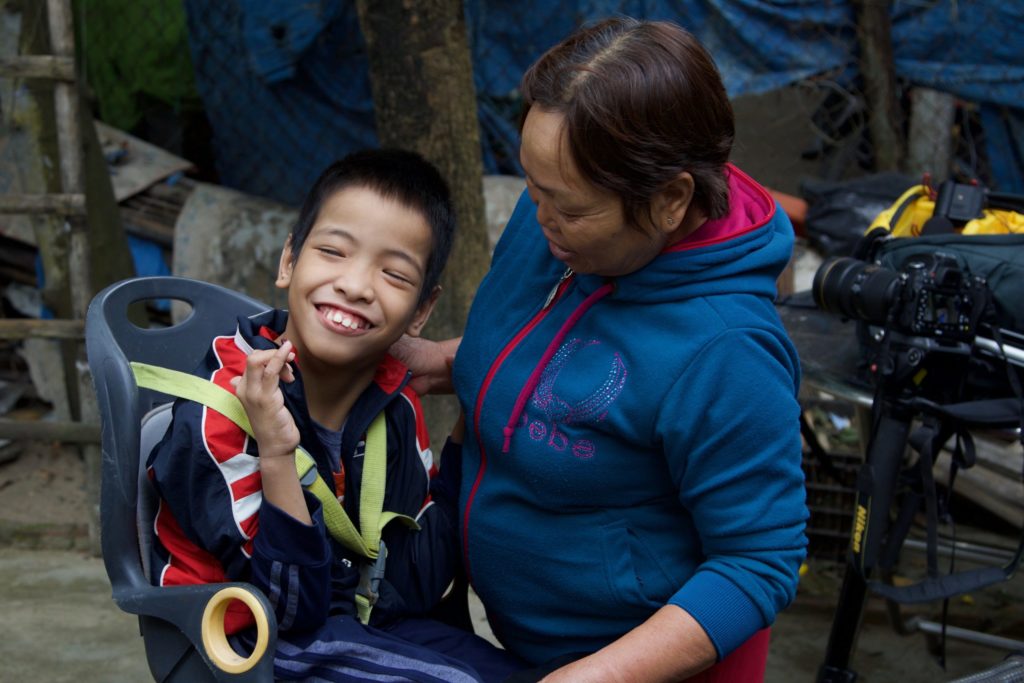
“We sincerely thank you for your generous support of Kianh Foundation — and my family in particular,” Khang’s mom says to the camera, speaking directly to her son’s sponsor. “Without Kianh Foundation, our lives — my son’s life — would not be what they are now.”
When we leave, Khang and his family will start their weekend — arguably for most kids the best part of the week. But Khang is counting down the minutes until Monday, when he gets to go back to school again.
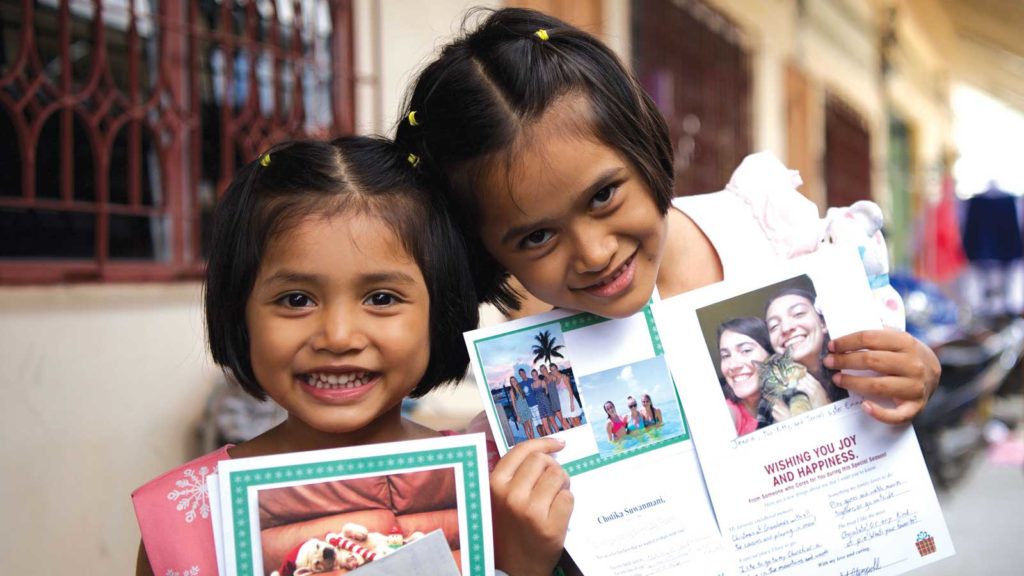
Become a Child Sponsor
Connect with a child. Provide for their needs. Share your heart for $43 per month.
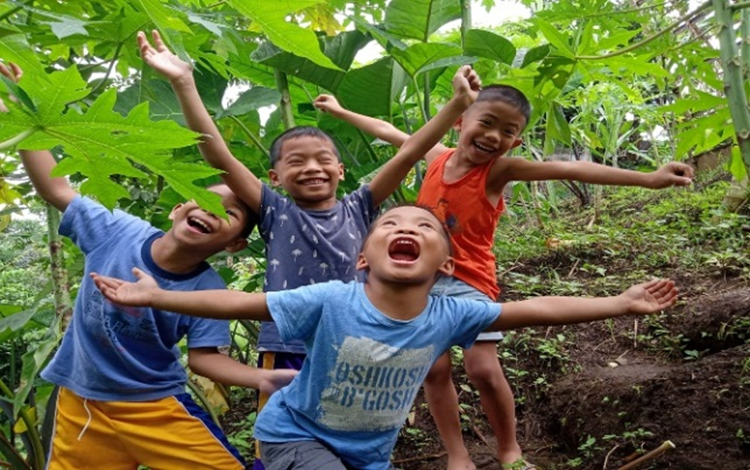
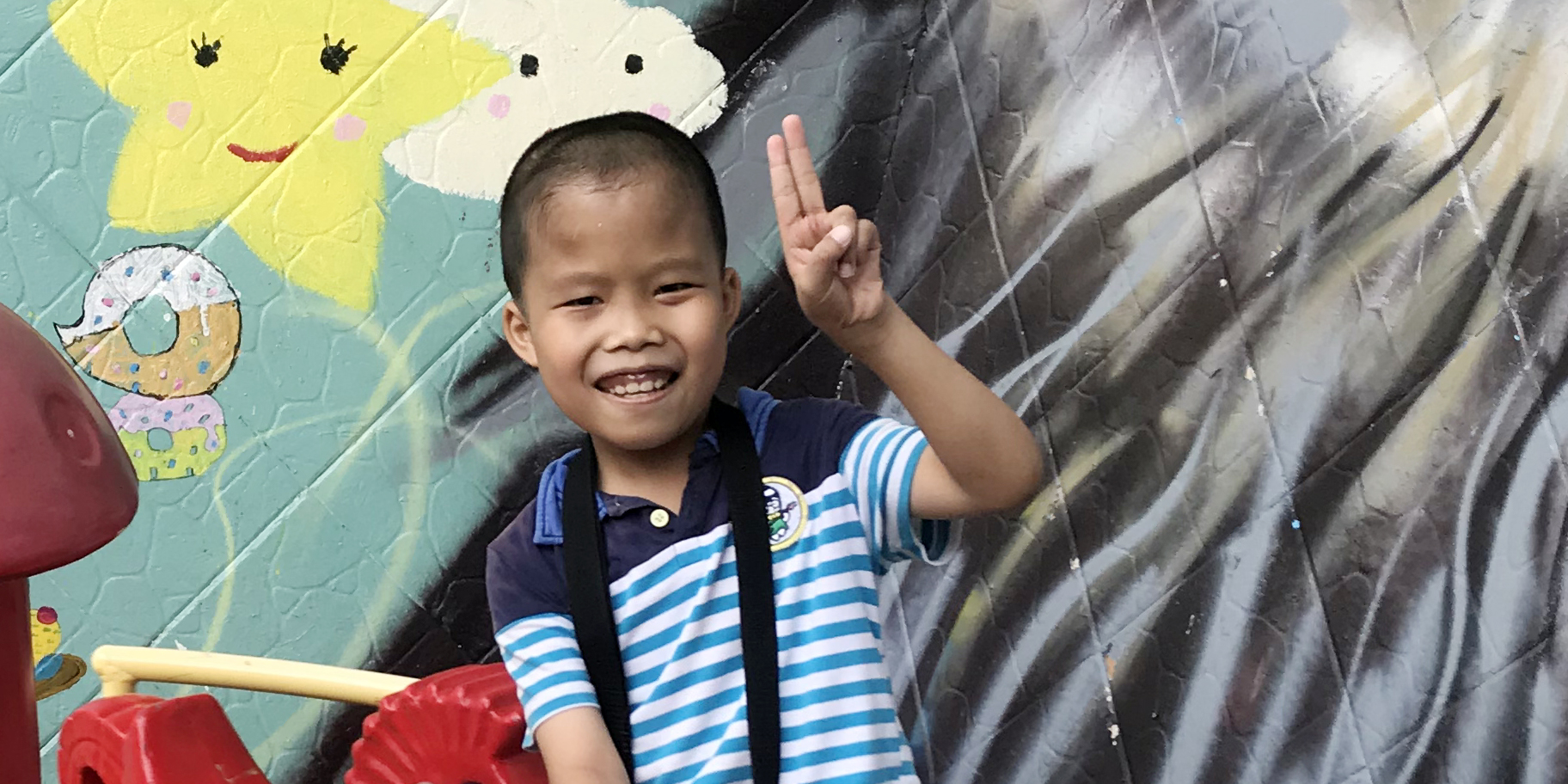
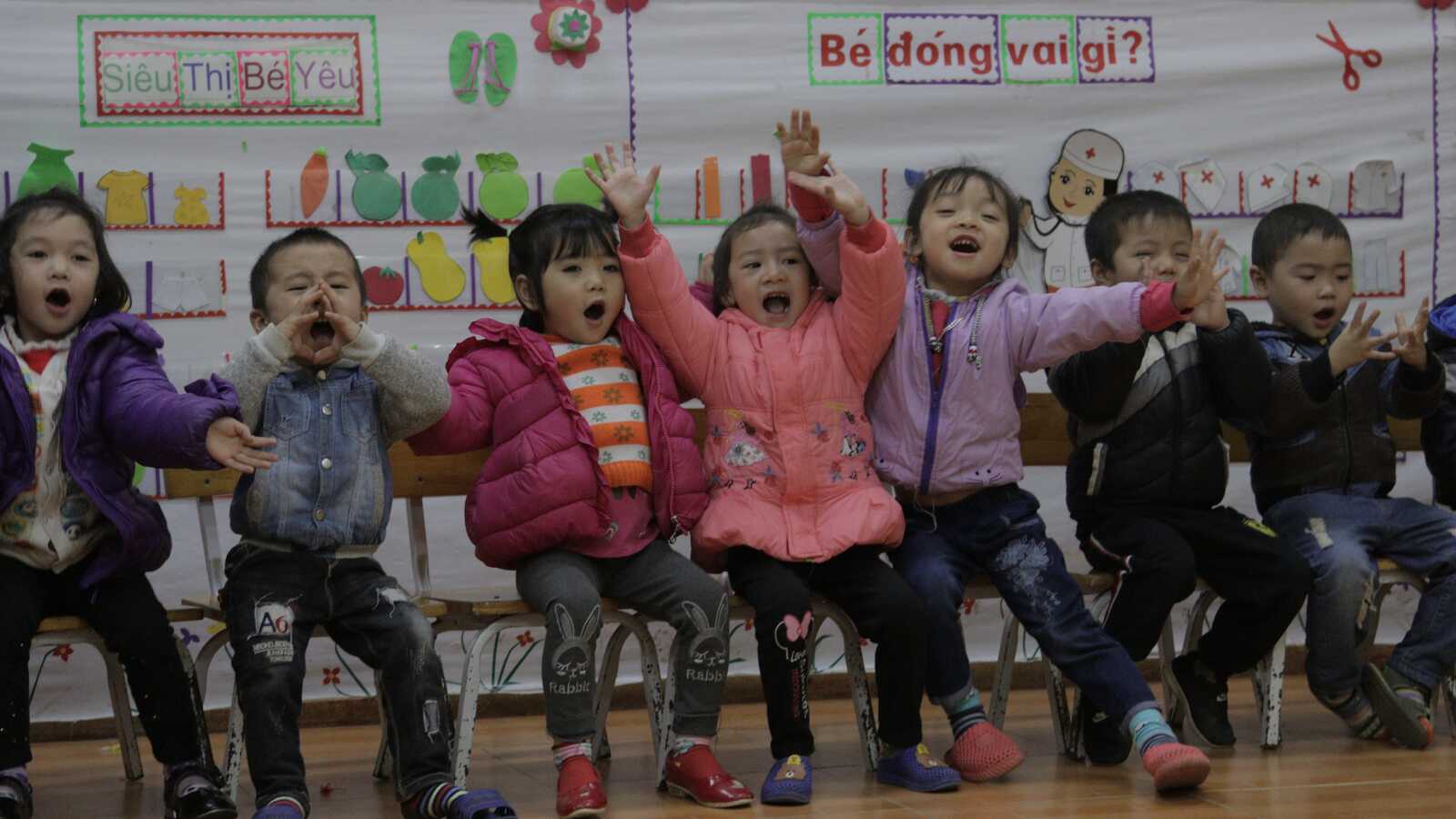
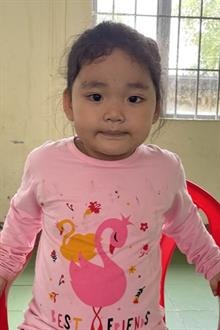

Is it possible to visit your school?
Hi George, I don’t believe we have a trip to Vietnam planned for now, but you can check the webpage below for our upcoming donor and adoptee trips if you’re interested! https://www.holtinternational.org/travel/
It is so exciting to hear about the work Holt International is doing in Vietnam and the help it provides to sponsored children and their families. So good to hear about the impact Holt International has in Khang’s life. We always look forward to the updates we receive about our sponsored children. Khang is one of them and it has been a blessing to be a part of his story!
We are grateful for faithful sponsors like you!